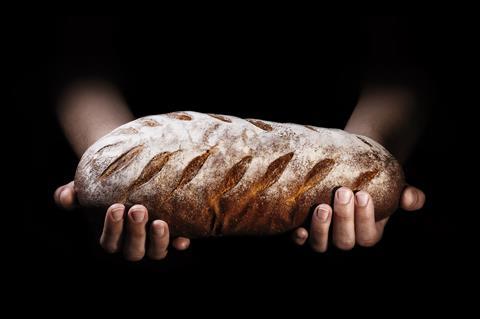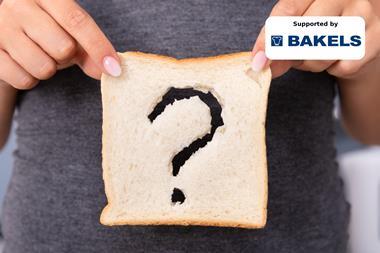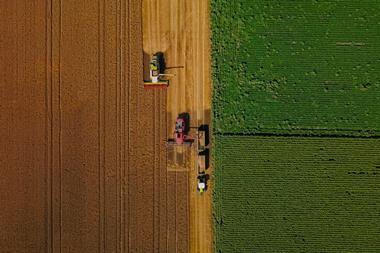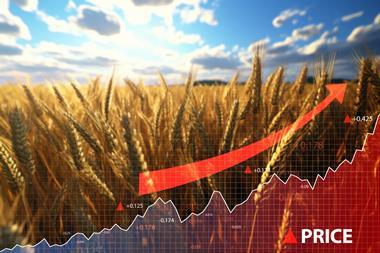Consumers care about what’s in their food – it’s why chlorinated chicken is so high on the list of post-Brexit trade concerns. It’s also the reason bakers are cleaning up labels, encouraging suppliers to develop new improvers.
“Today’s bakers are keen to appear more ‘kitchen cupboard’ friendly so that, although many breads still contain traditional improver ingredients such as emulsifiers, the trend is to look for cleaner labels,” explains Jonquil Dawson, formulator at Lesaffre UK. She adds that demand for cleaner labels means use of emulsifiers or soya is becoming the exception rather than the rule and that they are only used if the customer asks for them or when clean label is stated as not necessary, typically in longer-life products.
The challenge is creating clean-label ingredients to maintain the finished quality provided by more traditional approaches. One issue with removing E-numbers and complex ingredients is that natural alternatives may be less functional, warns Gary Tucker, technical development ambassador at Campden BRI.
“Consumers must be willing to accept that a bread product manufactured using clean-label ingredients is unlikely to look the same or last as long as one made from manufactured ingredients,” he explains. “It is possible to replace some of the functionality of emulsifiers, enzymes, preservatives and oxidising agents with natural ingredients, but not all.”
Our main challenge was to ensure the inclusion of these new improver systems would not compromise characteristics within the chosen end-product
AB Mauri is among the businesses that offer clean-label improvers.
“Our main challenge was to ensure the inclusion of these new improver systems would not compromise characteristics within the chosen end-product,” says AB Mauri UK marketing business partner Sam Cook. “We do feel that this has been successful within several applications.”
Lesaffre’s latest launch is a range of clean-label premixes and a clean-label improver system designed to provide the level of tolerance and dough stability associated with emulsifier-based systems.
“These systems are based on a new Lesaffre technology to provide stability and functionality across a range of products,” says Dawson. “Our premixes are also teamed up with sourdoughs to add additional flavours and point of difference.”
Zeelandia has recently launched the Gamma GP clean-label, soya-free improver. Originally targeted at the craft sector, larger industrial customers are now using it.
Most improvers include enzymes that enable bread to remain soft over its shelf-life
While clean-label has been one focus in recent years, changes in consumer demand have fuelled developments. For example, improver systems evolved as consumers made less frequent shopping trips.
“Most improvers include enzymes that enable bread to remain soft over its shelf-life,” explains Tucker at Campden BRI. “Often there are preservatives to stop mould growth. Without the enzymes and preservatives, bread could not be eaten after three days and wastage would rise.”
With demand for high-fibre products, changes to improvers have enabled higher quality wholemeal and malted grain bread to be manufactured through the use of xylanase enzymes that manage the fibre during processing.
“Introducing seeds, grains and cereals at higher addition rates challenges the volume, texture, crumb strength and shelf life of a loaf,” points out Cook at AB Mauri.
“Improver systems lend themselves well to these challenges, and the make-up of improvers has had to evolve to support this growing sector.”
Businesses can be sure suppliers will continue such evolution to keep pace with demand. If only they could have such confidence in the Brexit trade talks.

Can improvers be part of the artisan mix?
Alongside consumer interest in cleaner labels (see main article) has come interest in a back-to-basic approach to baking.
Studies of bread-eating habits have shown consumers see a strong link between provenance and traditional bread types, according to Stanley Cauvain of bakery consultants Baketran.
“Many consumers who are seeking an ‘authentic’ product seem to find it hard to accept the addition of ingredients which are not traditional.” He adds: “What matters to most consumers is that the traditional shape, flavour and texture of the product is maintained.”
At the extreme of the back-to-basics drive is the Real Bread Campaign, with its definition of bread as being made without the use of “so-called processing aids or any other additives”.
Ingredients suppliers argue, of course, that improvers have a role to play in most types of bread.
“While purist artisan bakers would choose not to use improvers in some products, there is a role for improvers in delivering the different quality characteristics sought by some consumers,” says Cauvain. “Crumb softness, especially over life, remains a key consumer requirement for almost all bread types.”
The right improver or dough conditioner – used at the right time and in the right way – can “allow a craft baker to make a quality product for their customer with confidence,” says Sara Autton, technical manager at Lesaffre.
“This may make the difference between selling it or recycling it,” she adds.
While noting that true ‘type 1’ sourdoughs may not require improvers systems, Sam Cook, marketing business partner at AB Mauri UK, believes the majority of UK-produced bread will still require them, now and in future. “This is because of the variable process, skill and finished product types individually chosen for production by the baker and this will only continue.”
The future of improvers
Looking ahead, suppliers are confident there will remain a need for improvers in the bakery industry.
Richard Hazeldine, national sales manager at Zeelandia, suggests several factors that may increase their use:
- Climate change leading to variability in wheat quality
- Customers becoming more demanding of product quality
- Industrial bakers needing more consistent and predictable dough and finished goods
- The drive to cut food waste increasing demand for products staying fresher for longer.
Demand may also rise in the short-term because of the impact of bad weather on the 2020 wheat crop, according to Campden BRI. “Lower quality bread wheat will not make loaves of equivalent quality unless the improver levels are increased,” it explained.






























No comments yet